Review: Arch Rival
Publisher: Parker Brothers
Year: 1992
Tagline: the game of balance… nerves… and suspense
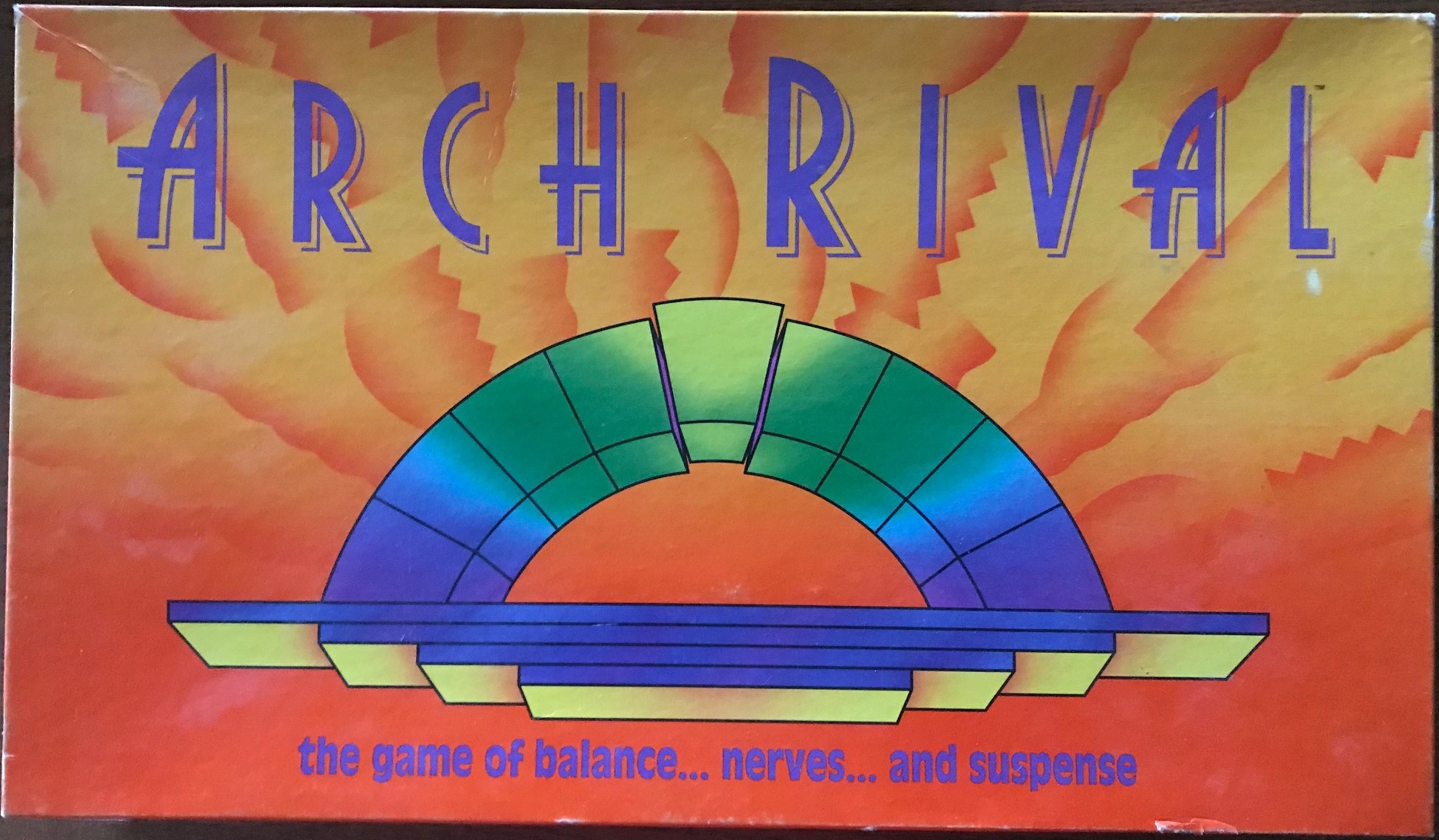
how we met
I have passed over Arch Rival for years now even though its orange cover calls to me every single time. I had never played it before, and I am usually up for trying a dexterity game. I think the thing was that I see Arch Rival at thrift so often that there was always next time.
But like in real life, there’s always next time until there’s not. At some point either Bill or I pulled the trigger and actually purchased Arch Rival to play with our group.
how it plays
In Arch Rival your goal is to NOT be the player to make the arch collapse. Like most dexterity games, this game does not have a single winner so much as it has a single loser.
To begin play, use the two ARCH SUPPORTS to set up the play area. The end result of this is an arch of empty COMPARTMENTS that are on a rocking base. One of the COMPARTMENTS is blue and includes an arrow showing that it is the KEYSTONE. This piece must always go in the middle. The rest of the COMPARTMENTS can be placed willy nilly, strategically, argumentatively, or in any way your group wants. It’s probably best to split up the colors, or have a rule that the same colors can’t be touching, but what do I know? When all pieces are in place, remove the ARCH SUPPORTS.
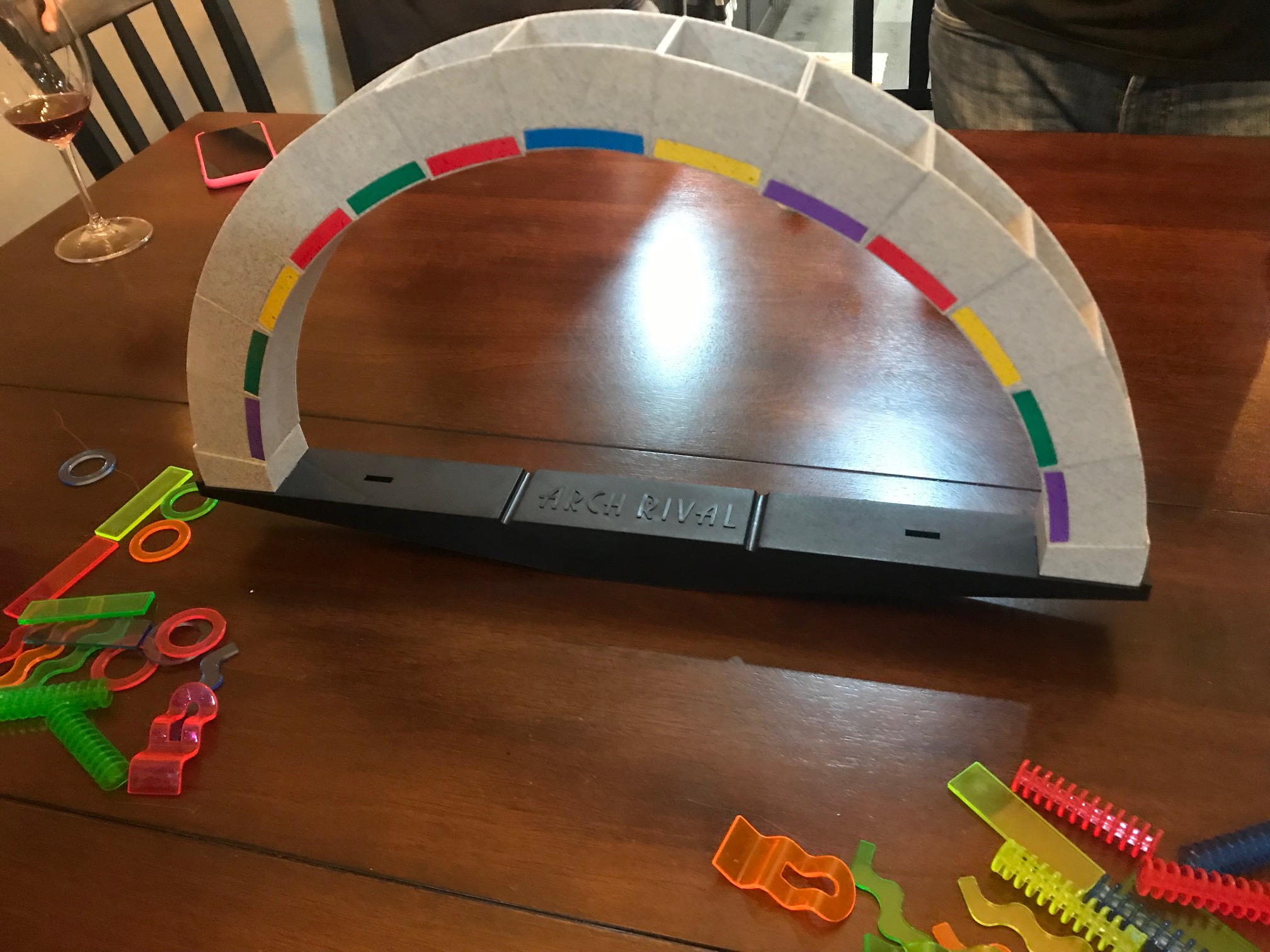
The game comes with 50 playing PIECES that you place around the table within reach of all players.
On a player’s turn, they roll both of the dice. One die has numbers and the other has colors. The number die shows the number of PIECES that player must place into a single COMPARTMENT. The color die shows the color options of COMPARTMENT that player can choose from. Or, if it’s blue, there is no option except the KEYSTONE.
The color die also has a side that just says ARCH RIVAL. If a player rolls that side of the die then the player to their left can decide which COMPARTMENT they must use that turn, except they cannot pick the KEYSTONE.
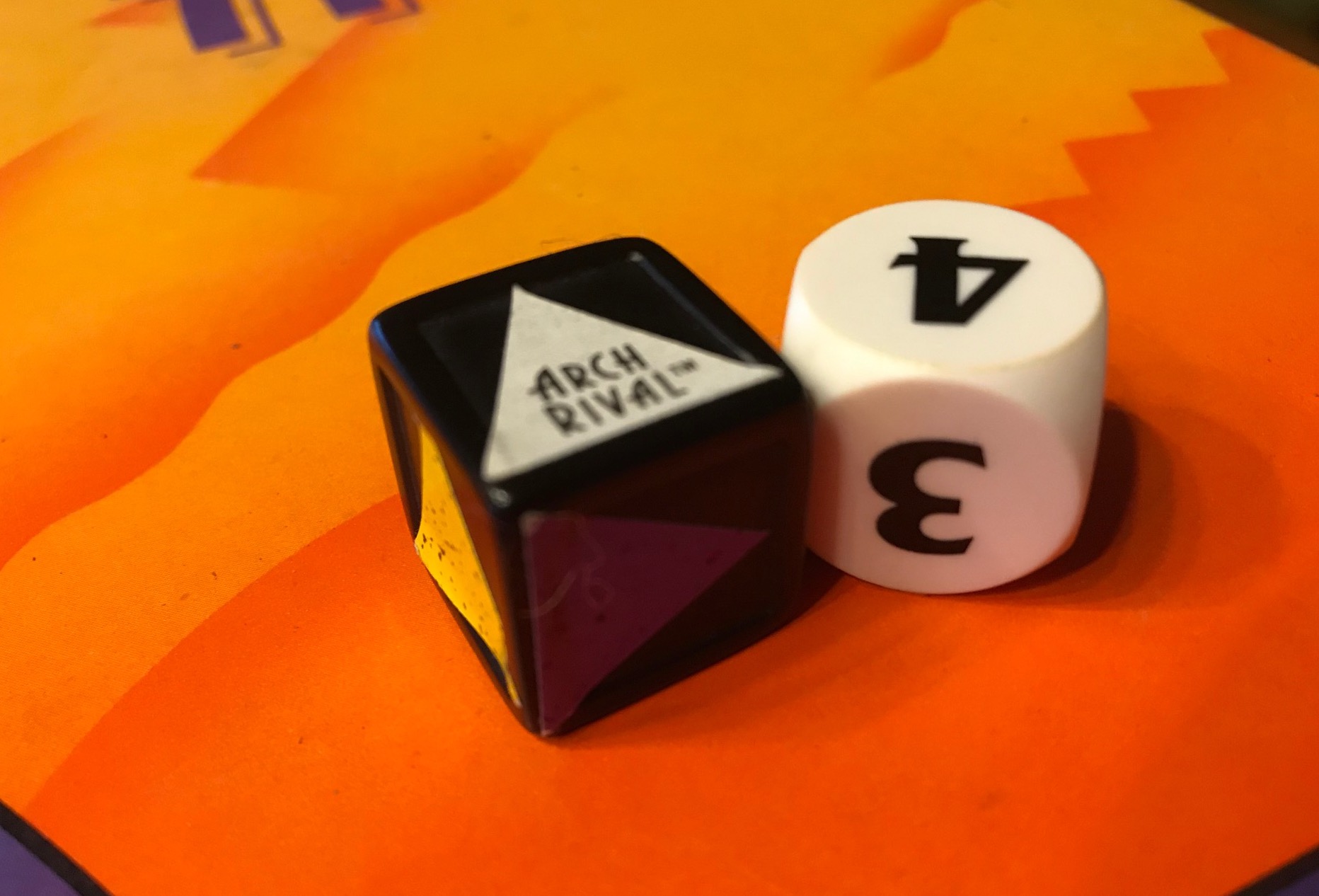
Play continues in this manner until the weight of the PIECES becomes too much for any particular section of the arch. The player that causes the arch to fall loses Arch Rival (whether it is their turn or not). Everyone else wins!
Now, it is possible to run out of PIECES entirely. In this case, players only roll the color die. If they roll a color they choose one COMPARTMENT of that color to empty of its pieces. If there is no COMPARTMENT of that color then play passes on.
If you roll Arch Rival instead of a color then the player to your left chooses which color COMPARTMENT you are required to empty. They can only assign color and not a specific COMPARTMENT. However they are not allowed to tell you to empty the KEYSTONE (the blue COMPARTMENT).
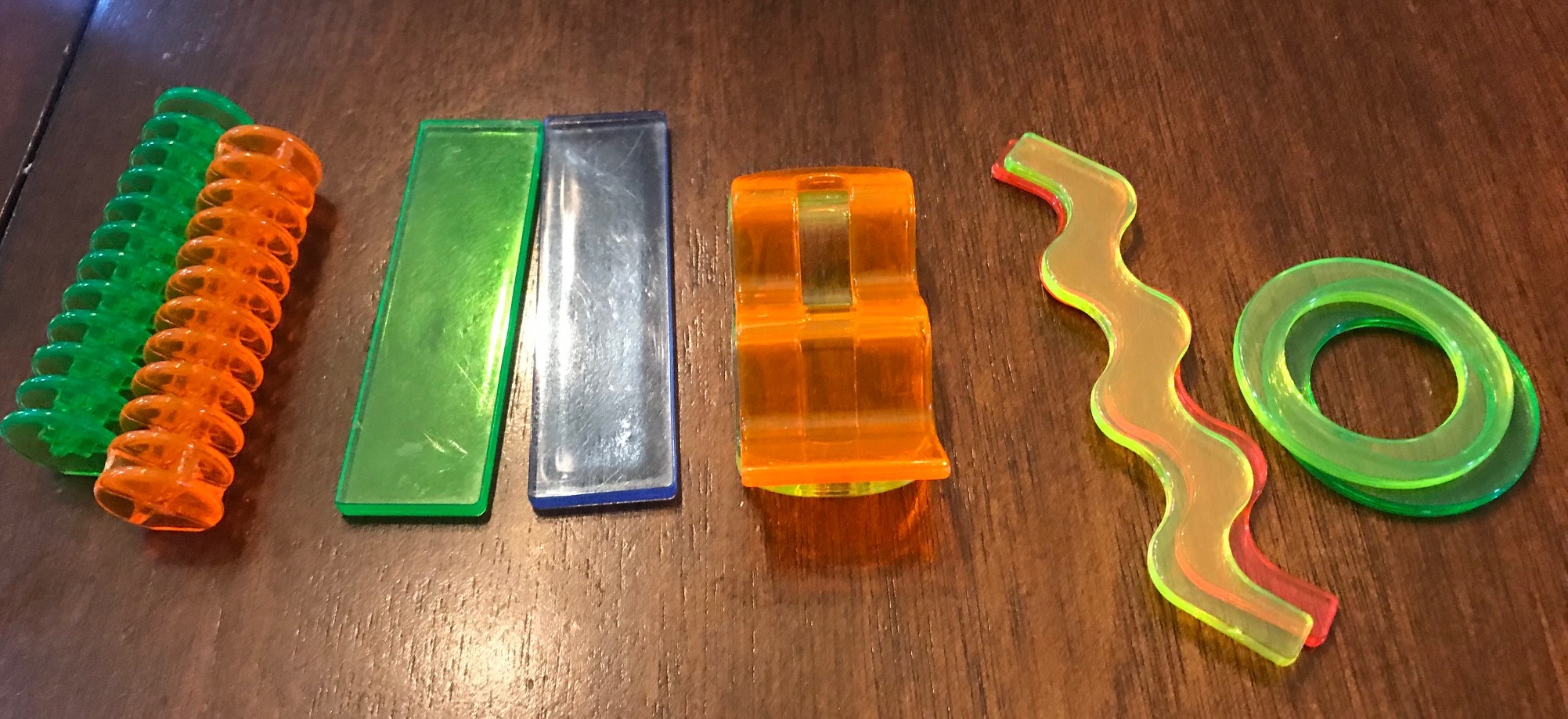
The rules do not really address what happens after a few PIECES are back into play. Do we continue to empty COMPARTMENTS? Do we let the next player go? If they roll higher than available PIECES do they just do what they can? We just played like they do what they can with available pieces, but this is unclear.
how it went
We played Arch Rival a few times one evening, and it turned out that Keri had played the game in her youth. She was basically ruthless. But Arch Rival does depend upon dice rolls for play, so you can only be so strategic.
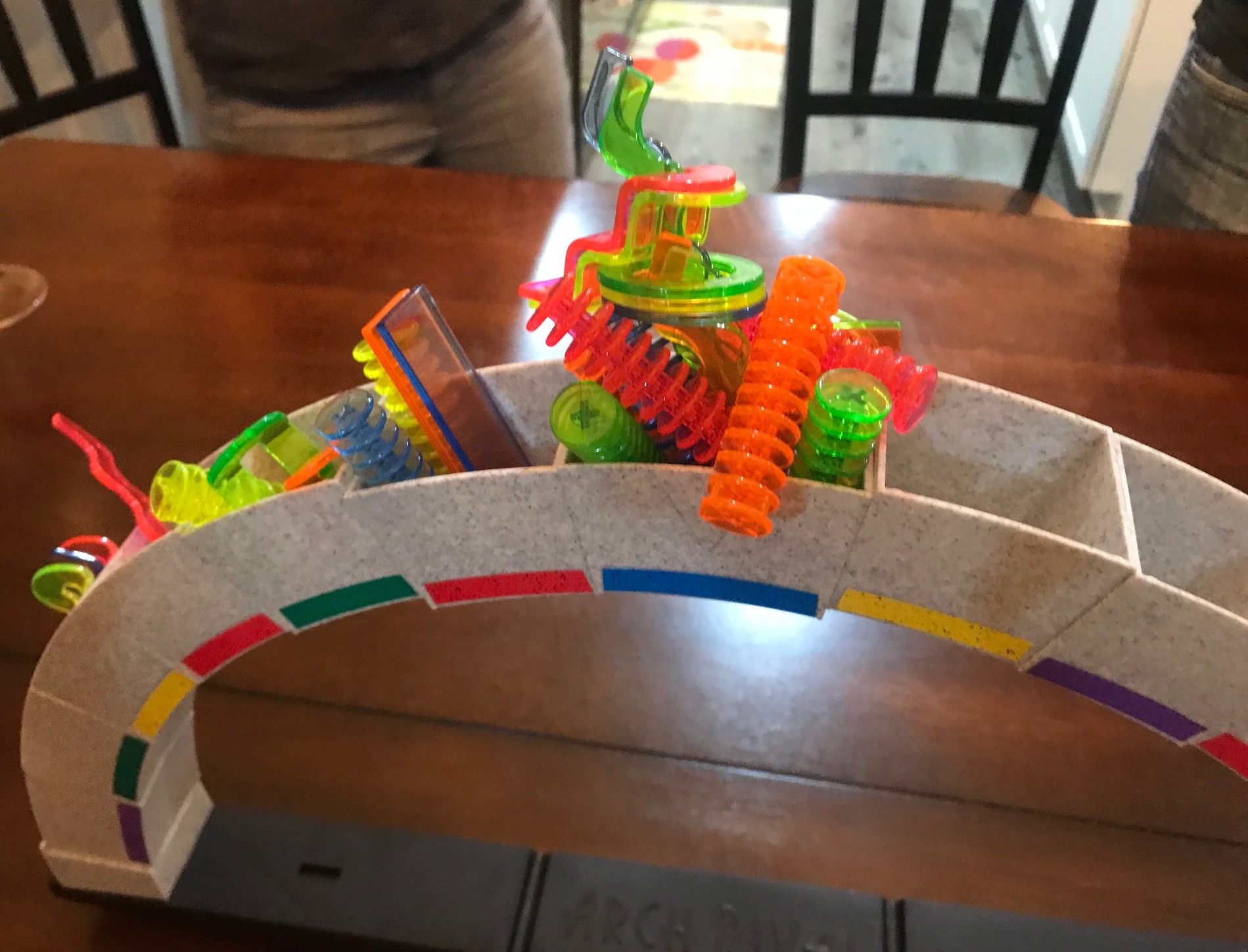
If you play for the first time and build the arch carefully, it might seem like the arch will never fall. Trust me, it will. Arch Rival adopts the same rules of many dexterity games that you are not safe until you pass the die. And even if it is not your turn, if you cause the arch to fall then you lose.
And that brings me to the end of our play. John had a new phone and had already mentioned that it was more slippery than he was used to. And at some point that phone came crashing to the table, followed shortly by our arch. And John lost Arch Rival!
We played a few times though. I definitely lost at least one of those. It’s not like I have time to balance weird spiral things into overly-full COMPARTMENTs all day.
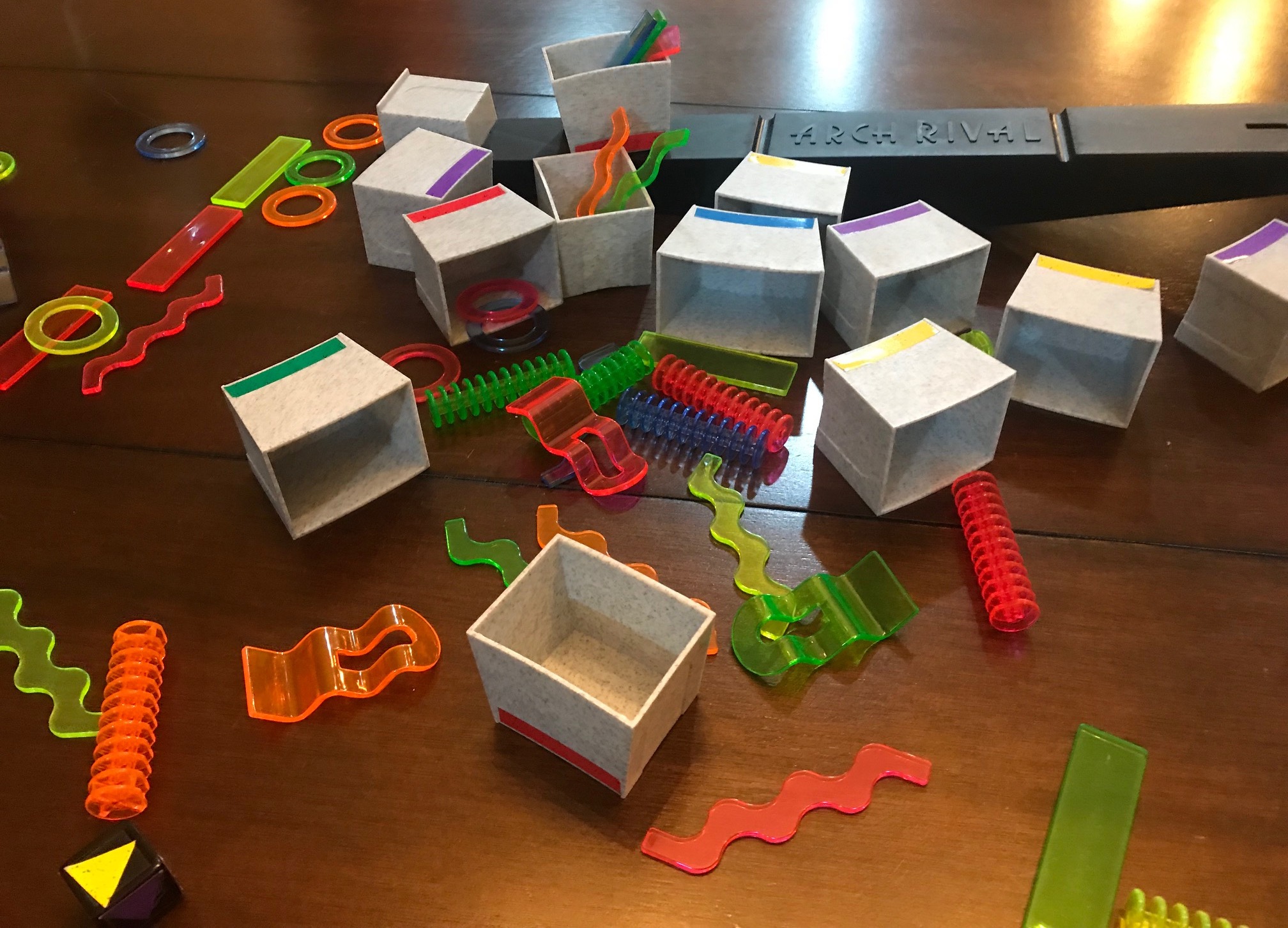
Our group likes dexterity games pretty well. We have reviewed a few at this point and played even more. But I think there is something limiting in an arch that is made up of COMPARTMENTs that you place things into. It feels shallow. It doesn’t really matter how careful you are placing a PIECE into a COMPARTMENT, until it does, so you can slack off until you can’t and it’s too late. That’s not true of many dexterity games.
play or pass
Pass. The cover of Arch Rival is so alluring with its modern-take-on-art-deco and the plain orangeness of it. But rolling a die that so specifically tells me my options felt less interesting than other dexterity games. Balance was a lot less important than luck, so the whole dexterity mechanic takes a back burner.
That said, this game is simple and brings the same tension that many dexterity games do. It was not my particular taste in dexterity games, but still delivers many of the benefits of that genre.